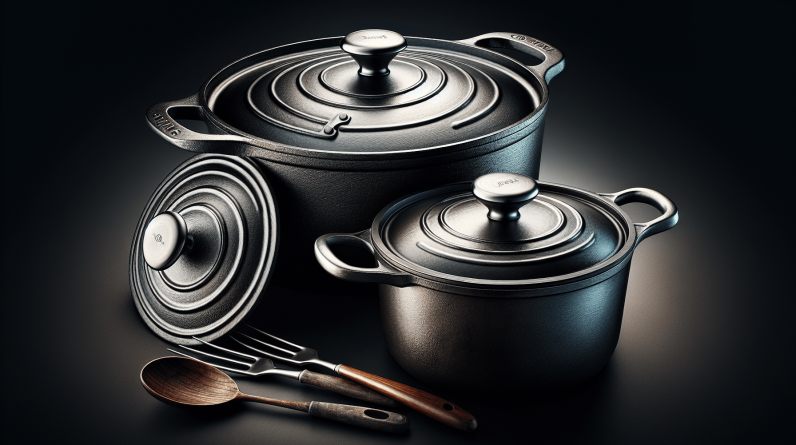Looking to transform your kitchen into a space that encourages healthy eating habits? Look no further! In this article, we will explore effective ways to revamp your kitchen, from simple tweaks to more involved renovations, to promote and support a healthier lifestyle. With a few strategic changes, you can create an environment that makes healthy choices easier and more enjoyable for yourself and your loved ones. Say goodbye to unhealthy temptations and welcome the embodiment of a well-balanced kitchen that nurtures your body and mind. Let’s dive in!
1. Designing a Functional Kitchen
1.1 Layout and Organization
When it comes to designing a kitchen that promotes healthy eating habits, the layout and organization are key. A well-designed kitchen should be both functional and efficient, allowing for easy movement and access to all areas. It is important to consider the “work triangle” concept, which refers to the efficient positioning of the sink, stove, and refrigerator. By placing these three key areas in close proximity to each other, it ensures that meal preparation and cooking can be done with ease.
1.2 Storage Solutions
Having ample storage in your kitchen is essential for keeping your cooking space organized and clutter-free. Invest in cabinets and drawers that are specifically designed for storage optimization. Consider adding pull-out shelves or racks for easy access to items at the back of the cabinets. Utilize vertical spaces by installing hooks or racks for hanging pots, pans, and utensils. By keeping your kitchen tidy and well-organized, you’ll be more motivated to prepare and cook healthy meals.
1.3 Easy Accessibility
In addition to efficient organization, it is important to ensure that your kitchen is designed with easy accessibility in mind. Arrange commonly used items, such as spices and utensils, within arm’s reach. Use clear containers or labeled bins to store ingredients, making it effortless to locate what you need. Implementing a well-organized and easily accessible kitchen will streamline your cooking process, making healthy meal preparation a breeze.
2. Choosing the Right Appliances
2.1 Energy-Efficient Appliances
When selecting appliances for your kitchen, opt for energy-efficient models. Energy-efficient appliances not only help reduce your carbon footprint but also save you money on utility bills. Look for appliances with the ENERGY STAR label, as these have been certified to meet strict energy efficiency standards. Investing in energy-efficient appliances will not only contribute to creating a healthier environment but will also align with your goal of promoting healthy eating habits.
2.2 Proper Food Preservation
Proper food preservation is essential for maintaining the nutritional value and freshness of ingredients. Choose refrigerators and freezers that have adequate storage capacity and temperature control options. Consider investing in models with humidity-controlled drawers to keep fruits and vegetables crisp and fresh for an extended period. Additionally, make use of proper storage containers to keep leftovers and meal prepped items organized and well-preserved. By ensuring that your appliances are conducive to proper food preservation, you can reduce food waste and promote healthier eating habits.
2.3 Smart Kitchen Gadgets
In today’s modern age, technology can play a significant role in promoting a healthy lifestyle. Consider adding smart kitchen gadgets to your arsenal of appliances. Smart gadgets, such as smart scales or nutrition trackers, can provide valuable insights into the nutritional content of your meals. They can assist in portion control and help you make healthier choices when it comes to meal preparation. By utilizing these gadgets, you can create a kitchen environment that encourages informed decision-making and promotes healthy eating habits.

3. Essential Kitchen Tools
3.1 High-Quality Knives
Investing in high-quality knives is essential for efficient and safe meal preparation. A good set of knives will not only make chopping and slicing easier but will also ensure precision and reduce the risk of accidents. Look for knives made from high-quality materials, such as stainless steel, and choose a variety of sizes and styles to cater to different types of food preparation. Having sharp and reliable knives in your kitchen will make cooking a more enjoyable experience and encourage you to cook healthy meals from scratch.
3.2 Food Processor
A food processor is a versatile tool that can greatly aid in healthy meal preparation. It can be used for chopping vegetables, grinding nuts, making sauces and dips, and even kneading dough. By having a food processor in your kitchen, you can save time and effort in preparing healthy meals. It allows for quick and efficient food processing, making it easier to incorporate fresh and nutritious ingredients into your cooking.
3.3 Blender
Another essential kitchen tool for promoting healthy eating habits is a blender. Blenders are perfect for creating nutritious smoothies and soups. They can effortlessly blend fruits, vegetables, and other ingredients into a smooth and delicious consistency. Investing in a high-quality blender with various speed settings and a strong motor will ensure that you can easily incorporate healthy drinks and soups into your diet.
4. Utilizing Healthy Cooking Methods
4.1 Steaming
Steaming is one of the healthiest cooking methods as it preserves the nutrients and natural flavors of the food. Invest in a steamer basket or a steaming appliance to make steaming vegetables, seafood, and even grains a breeze. Steaming retains more minerals and vitamins compared to other cooking methods such as boiling or frying. By incorporating steaming into your cooking routine, you can ensure that your meals are not only delicious but also packed with essential nutrients.
4.2 Grilling
Grilling is a great way to add flavor to your meals without adding excess fat or calories. Whether you prefer an outdoor grill or an indoor grill pan, grilling allows you to cook meats, vegetables, and even fruits in a healthier manner. The excess fat drips away during the grilling process, resulting in a leaner and healthier dish. Experiment with different marinades and rubs to enhance the flavor of your grilled creations.
4.3 Baking
Baking is another healthy cooking method that allows you to create delicious and nutritious meals with less added fat. Whether you’re baking fish, chicken, or vegetables, this method helps retain moisture while adding a crispy texture. You can also bake healthier versions of traditionally fried dishes, such as sweet potato fries or oven-baked chicken tenders. By incorporating baking into your cooking repertoire, you can enjoy guilt-free meals that are both tasty and nutritious.

5. Emphasizing Whole Foods
5.1 Stocking Up on Fresh Produce
One of the best ways to promote healthy eating habits is by stocking your kitchen with an abundance of fresh produce. Fruits and vegetables are packed with essential vitamins, minerals, and fiber that are crucial for maintaining good health. Make it a habit to regularly visit your local farmer’s market or grocery store to ensure a variety of fresh produce in your kitchen. By having a colorful assortment of fruits and vegetables readily available, you’ll be inspired to create nutritious meals.
5.2 Bulk Purchase of Whole Grains
Whole grains, such as quinoa, brown rice, and whole wheat pasta, are rich in fiber and provide sustained energy throughout the day. Consider buying these items in bulk to save money and encourage healthier eating habits. Store them in airtight containers to maintain freshness and make them easily accessible in your kitchen. By incorporating whole grains into your meals, you can add nutritional value and promote a balanced diet.
5.3 Ditching Processed Foods
To create a kitchen that promotes healthy eating, it is crucial to minimize or eliminate processed foods from your pantry. Processed foods often contain high amounts of unhealthy fats, added sugars, and artificial ingredients. Instead, focus on whole, unprocessed foods to ensure that you are consuming the nutrients your body needs. By removing processed foods from your kitchen, you eliminate the temptation and make room for healthier alternatives.
6. Creating a Healthy Pantry
6.1 Organizing and Labeling
A well-organized pantry is essential for maintaining a healthy kitchen. Take the time to organize your pantry by grouping similar items together, such as grains, legumes, and canned goods. Use storage containers or labeled jars to keep ingredients fresh and easily identifiable. This will make it easier for you to find what you need and avoid buying unnecessary items. By keeping a well-organized and labeled pantry, you can streamline your meal preparation and make healthy choices effortlessly.
6.2 Stocking Up on Healthy Staples
Stocking your pantry with healthy staples is essential for creating nutritious meals. Keep a variety of dried herbs, spices, and low-sodium stocks on hand to add flavor to your dishes without relying on unhealthy additives. Consider having a selection of different types of cooking oils, such as olive oil or coconut oil, for various cooking methods. Additionally, stock up on items like nuts, seeds, and dried fruits for nutritious snacks and recipe add-ins. By having a well-stocked pantry, you’ll have the foundation for creating a wide array of healthy meals.
6.3 Minimizing Sugary Snacks
When it comes to creating a healthy kitchen, it’s important to minimize sugary snacks. Replace sugary treats with healthier alternatives, such as fresh fruit, yogurt, or homemade energy bars. Store these healthier snacks in a visible fruit bowl or dedicated section of your pantry to encourage better choices. By reducing the availability of sugary snacks, you’ll be more likely to reach for healthier options when hunger strikes.

7. Incorporating Color Psychology
7.1 Vibrant Dinnerware
Incorporating color psychology into your kitchen design can have a significant impact on your eating habits. Choose vibrant dinnerware, such as colorful plates, bowls, and utensils, to make your meals more visually appealing. Research suggests that using bright and bold colors can stimulate appetite and enhance the overall dining experience. By serving your healthy creations on visually stimulating dinnerware, you’ll be more motivated to enjoy and savor your meals.
7.2 Colorful Kitchen Decor
Extend the use of color psychology to your kitchen decor by incorporating bright and uplifting colors. Consider painting the walls in shades of blue or green, which have been found to have a calming effect and reduce food cravings. Add pops of color through decorative accessories, such as curtains, rugs, or artwork. By creating a colorful and inviting environment, you’ll be more likely to enjoy spending time in your kitchen and prepare healthy meals.
7.3 Greenery and Plants
Introducing plants and greenery into your kitchen can have numerous benefits for your overall well-being. Not only do plants improve air quality, but they also add a touch of nature and serenity to your space. Consider placing potted herbs, such as basil, rosemary, or mint, on your windowsill or countertop. These herbs can not only be used to enhance the flavors of your dishes but also serve as a reminder of the importance of fresh ingredients. By incorporating plants into your kitchen, you’ll create a calm and inviting atmosphere that encourages healthy cooking and eating.
8. Meal Planning and Prepping
8.1 Weekly Meal Planning
Meal planning is an effective strategy for promoting healthy eating habits. Set aside time each week to plan your meals, taking into account your nutritional goals and dietary preferences. Create a grocery list based on your meal plan to ensure that you have all the necessary ingredients on hand. By having a clear plan, you’re less likely to resort to unhealthy convenience foods or impulsive take-out meals. Meal planning helps you stay committed to your health goals and ensures that you are consistently nourishing your body with nutritious meals.
8.2 Batch Cooking
Batch cooking is a time-saving technique that involves preparing large quantities of meals in advance. Dedicate a specific day or time to cook multiple servings of your favorite healthy recipes. Portion the cooked meals into individual containers and store them in the refrigerator or freezer for later use. Batch cooking not only saves time but also helps you avoid the temptation of unhealthy last-minute food choices. By making healthy meals readily available, you’ll be more likely to eat well even on busy days.
8.3 Prepping Healthy Snacks
Prepare healthy snacks in advance to have on hand for those moments of hunger between meals. Cut up fresh fruits and vegetables and store them in portioned containers. Make homemade granola bars, energy balls, or trail mix for quick and nutritious snacks. By prepping healthy snacks, you eliminate the temptation to reach for less healthy options when hunger strikes. Having healthy snacks readily available will make it easier to make smart food choices throughout the day.
9. Making Healthy Choices Accessible
9.1 Visible Fruit Bowl
One simple yet effective way to encourage healthy eating habits is by having a visible fruit bowl in your kitchen. Display an assortment of fresh fruits on your countertop, making them easily accessible for snacking. The vibrant colors and delicious aroma will entice you to reach for a piece of fruit instead of less healthy alternatives. By making healthy choices visible and convenient, you’re more likely to incorporate them into your daily routine.
9.2 Grab-and-Go Options
Life can get busy, making it easy to fall into the habit of grabbing unhealthy convenience foods. Combat this by preparing grab-and-go options that are both healthy and convenient. Pre-packaged salads, overnight oats, or veggie wraps are great options for quick and nutritious meals on the go. By having these prepared meals readily available in your kitchen, you can make healthy choices even when you’re short on time.
9.3 Healthy Beverage Choices
Promote healthy hydration by keeping your kitchen stocked with a variety of healthy beverage options. Replace sugary drinks with alternatives like herbal teas, infused water, or homemade smoothies. Investing in a water filter or a sparkling water maker can also encourage you to drink more water throughout the day. By making healthier beverage choices easily accessible, you’ll stay hydrated and support your overall health.
10. Setting Up a Dining Area
10.1 Family Style Dining
Setting up a dedicated dining area creates a designated space for shared meals and family time. Family-style dining encourages mindful eating and healthy portion control. Gather around the table and enjoy each other’s company while savoring the nutritious meals you have prepared. This practice promotes healthier eating habits and fosters a positive relationship with food.
10.2 Comfortable Seating
Having comfortable seating in your dining area is essential for creating a welcoming and enjoyable space. Choose chairs and benches with supportive cushioning to encourage family and guests to sit and linger at the table. Comfortable seating promotes relaxation and encourages savoring meals, making dining a pleasant experience.
10.3 Mindful Eating Environment
Creating a mindful eating environment in your dining area can help improve your relationship with food and promote healthier eating habits. Consider dimming the lights, playing soft music, or using scented candles to create a calming ambiance during mealtime. Minimize distractions by turning off the television and putting away electronic devices. By creating a serene and solely focused eating environment, you can fully appreciate and savor your meals.
In conclusion, creating a kitchen that promotes healthy eating habits requires careful consideration of various factors. From the layout and organization to the selection of appliances and tools, each aspect plays a crucial role in fostering a healthy cooking and dining environment. By incorporating these tips and strategies, you can design a kitchen that not only supports your health goals but also makes the process of cooking and eating nutritious meals an enjoyable and fulfilling experience.










